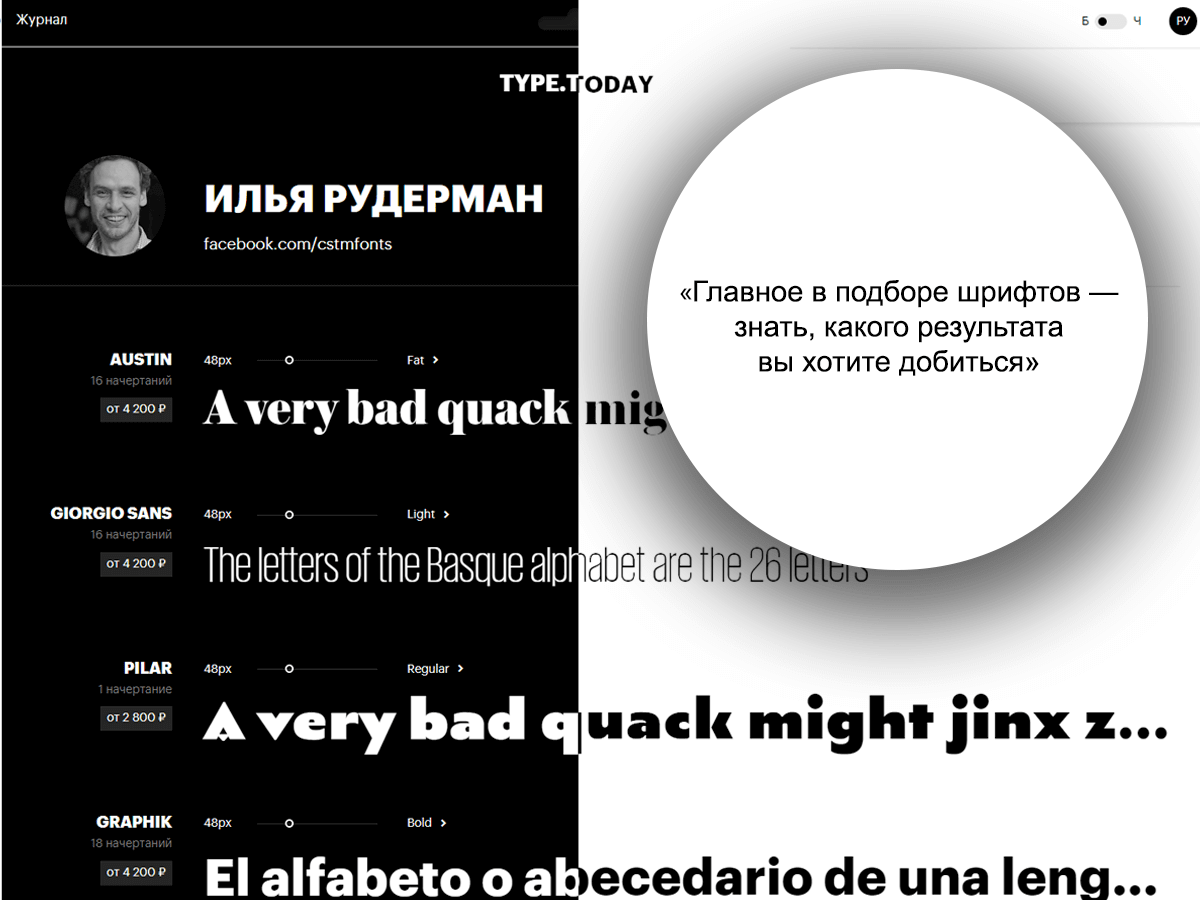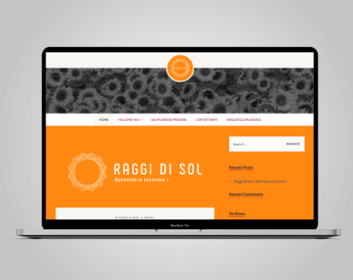Are you starting a business on a shoestring budget or need ways to stretch your small business marketing budget? Marketing a business doesn’t have to cost a lot. Here are 53 low-cost, high-impact methods to advertise and promote your business.
Determining the best ways to advertise and promote your business can be an ongoing challenge. If your business is new, you may not know how to advertise your business to get your name known. If you’ve been in business for years, you may be wondering how to promote your business effectively when the promotional methods you’ve always used aren’t working as well anymore. The way customers shop for what you sell may have changed, their needs may be different, or you’re missing younger, new customers because you’re unsure how to promote your business to them.
Whatever your business structure or circumstances, you need proven advertising and marketing tactics to find new customers without spending a fortune. These need to include a mix of traditional and digital marketing. Here are some of the best ways to bring in business on a limited budget.
53 Ways to Promote Your Business
You can’t promote and advertise your business effectively until you take these two steps:
1. Plan your marketing
To market your business successfully you need a planned, organized approach. Hit or miss marketing wastes time and money. Start by defining your marketing strategy and setting a budget.
2. Identify your best prospects
Determine the characteristics of your best prospects and the best promotional strategies to reach them. Be as specific as possible.
Is the decision-maker the CTO of the company, the director of human resources, the paralegal filing new business LLCs, or a 37-year-old working mom? Will you find them on Twitter, Pinterest, Facebook, YouTube, or Instagram? What about in-person networking at local business meetings or community organizations?
What about advertising? Will customers be searching for your type of product on Google or Bing? Do they look for coupons in newspapers? Do you want to start promoting your business to them at the start of their buying cycle, or when they’re about ready to pull out their credit card and make the purchase? Write your answers down and refer to them before you start any new marketing tactic. Use this marketing plan worksheet to gather your information.
Learn how to promote your business online
Digital marketing isn’t an option — it’s a necessity. Whether you sell turquoise jewelry, empanadas, or asbestos removal services, you need to promote and advertise where your customers are searching for what you sell. And that’s online. Here are ways to accomplish that affordably.
3. Set up a website for your business
If you don’t have a website, get one set up. A working website is critical for marketing your business and for making your brand known, even if your business has a big social media following. You need to get a business domain because, depending on what you sell, your website serves as a lead generation tool, online brochure, catalog, and information source for your potential customers.
Having your own website is important because you have complete control over how you promote your products and services on your site and how long promotions and other content is visible. You don’t have that control with social media.
If you can’t afford to have someone custom-design your website, set up your site using a customizable web template. Customizable templates make it easy to create a basic website.
Whether you choose a ready-to-use template or have someone build a site for you, be sure the design is responsive. (In other words, that it looks good and is easy to read on mobile devices as well as on desktop and laptop computers.)
RELATED: How to Advertise Your Website for Free
4. Include a blog
Blogs (or other written articles on your site)serve two functions. They inform your customers and prospects. The blog or article content also improves your chances of being found in search engines. You don’t have to be a professional writer to add a blog. Just write information your customers will find helpful at different stages of the buying cycle or provide tips and hints on using what you sell.
5. Use basic SEO for your website.
SEO stands for search engine optimization — in other words, setting up your web pages so the search engines understand the content of the pages. Doing so increases the chances of having your site show up in search results when someone searches for what you sell or the kind of information you provide.
Although some companies spend a lot of money on SEO, there are a number of things you can do yourself to improve the SEO of your site. Among them:
- use a different title for each page on your website
- use phrases people search for in the page title
- include your business name, location, and phone number on all pages on your site
6. Promote your business on Google
You can set up a business profile for free on Google. The profile may show up when people search for your company name and can help advertise your business. To get listed on Google, go to Google Business Profile. Bing has a similar option. To get listed on Bing, go to Bing Places for Business. On both sites, fill out all the information you can, including phone number, website, business address, and hours of operation, when appropriate. Doing so can help your business show up at the top of search results when someone in your general vicinity is searching for your products or services.
7. Promote your business on social media
You can set up a free business profile or page on social media sites such as LinkedIn, Facebook, Instagram, Twitter, and Pinterest. You can set up a Facebook page for your business that is separate from your personal profile. To attract attention from potential customers, be sure to include a good description, keywords, business phone number, and a link to your website. Keep your business and personal pages separate on other social media sites, as well.
8. Participate in social media discussions
Look for or start social media discussions on topics related to your field. Look for groups or conversations that talk about your type of products or services and participate in the conversations, but don’t spam them with constant promos for what you sell.
9. Use email marketing to bring in business
Email marketing is the most cost-effective way to advertise and promote your business. Communicating with customers and prospects reminds them to make purchases or visit your website.
Use an email marketing service to maintain your mailing list and send the emails. Ask customers, website visitors, and social media followers to sign up for your email list. Then, send an email newsletter and/or promotional offers to customers and prospects on a regular basis.
One good way to build a permission-based email list of people who want your mailings is to give something away. It could be a free ebook or even a free tip-sheet on how to do something related to your business.
If you’re a health coach, for instance, you might offer people who sign up for your free newsletter a tip sheet with “10 Easy Ways To Lose Weight Without Going on a Diet.” If you don’t have anything to give away, try offering a signup discount on products or services as an incentive. An email service makes it easy to manage your list and send professional-looking mailings.
10. Post tips and images regularly to social media accounts
To make your social media accounts useful promotional tools, you need to post regularly. If you post too infrequently, your posts won’t be seen. Information and photos that are interesting, helpful, or entertaining to your audience will get the most visibility. Tips on how your followers can improve their lives or businesses and posts with special offers are likely to get the most likes and shares. In addition to posting regularly, you should vary the time of day you make your posts. Different followers will be reading at different times of the day.
11. Boost your most popular posts
Boosting social media posts is a low-cost option for advertising on social media sites. When you boost a post, you pay to increase its visibility. Target the boosted posts at groups of people who are most like your customers. This can be an inexpensive way of getting your business in front of potential customers in very targeted locations or who have interests that match what you sell.
12. Run ads on Facebook and other social networks
Although boosting a social media post is one type of ad, you get more options when you create an ad instead of boosting a post. On Facebook, for instance, creating an ad will let you set objectives such as conversions or lead generation, create call-to-action buttons, take advantage of more advanced targeting options, and do other things you can’t do by boosting a post.
13. Run a webinar
Pick a topic for the webinar that will be popular with customers and prospects. Some topics that can foster customer engagement are important industry news, strategies for improving some aspect of life or business, and ways to solve common problems. You could also teach a short introductory course in a webinar.
Promote the webinar on social media and in your newsletter. Encourage friends to promote it on their social media accounts and newsletters, too. Require attendees to register with an email address so you can remarket to them after the webinar.
14. Create PDF versions of promotional materials
Convert your promotional literature to PDF format so you send product literature to those who request it in email. You save the postage; they get the material in minutes instead of days. Use a lead form on your website to offer the promotional material to website visitors.
15. Test pay-per-click (PPC) advertising
Buying pay-per-click advertising on search engines is an effective way for some businesses to acquire new customers and leads. Whether or not it will work for you depends on the nature of your business.
If you’re not yet advertising on search engines, look for offers that give you $50 or $75 in free advertising to start. Read the directions for the service you plan to use, and very carefully watch what you spend on a daily or more frequent basis until you are comfortable using PPC ads and see you are getting a return on your investment.
16. Look into Google local service ads
Google local services ads are shown at the top of Google search results when people search for certain local consumer services such as plumbers or electricians or roofers. Potential customers can click or tap on your local services ad to either call you or send you a message request. An added benefit: a Google Guarantee badge is available for businesses that pass a Google screening and qualification process.
You pay only for valid leads, but the cost per call or text can be very high. Thus, these ads are best suited for established businesses that know how to convert leads and know that the average customer charge and/or lifetime value of a customer will allow them to profit to make a profit.
17. Ask customers to review your business
Good customer reviews are an important promotional tool. When someone is ready to choose a product or a service provider, they want to be assured that they’re making a good choice. One way they gain that assurance is by looking at the reviews. To increase the chance that customers will leave a review, send them a note thanking them for their business, and ask them to review your site online. Include a link to a place you’d like them to post their review.
Related: How to Get Referrals and Recommendations
Use traditional methods to promote and advertise your business
Although online marketing and advertising are essential for bringing in business today, that doesn’t mean you should neglect traditional marketing tools. Online and offline marketing methods work hand-in-hand to bring in customers and clients and keep them coming back. Here are off-line promotional strategies that are just as important now as they were in the past.
18. Boost your credibility by forming an LLC or corporation
If you are operating as a DBA, consider forming an LLC or a corporation. The LLC or Inc designation that you add to your business name when you choose one of those entities makes your business seem more permanent and established than a DBA. That perception can give you a marketing advantage by increasing your credibility.
19. Get business cards and stationery created
If you’re just starting out and don’t have a business card, business stationery, and promotional flyers yet, have them made up — immediately. They tell prospective customers you’re a professional who takes your business seriously.
Printed business cards are important for marketing your business because they help people you meet remember you, your brand, and what your company does. Be sure to list your website address on your business card, letterhead, and any handouts you create. Include your main social media profile link, too, if possible. Another good strategy: include a QR code on the back with a link to sign up for your email list.
You should have the business cards professionally printed, but you can print your own letterhead and envelopes if you use good paper. If you only use a few handouts a month, you can print those yourself, too. But if you need a large quantity, have them printed.
20. Give business cards to your friends
Get your business cards into the hands of anyone who can help you in your search for new clients. Call your friends and relatives and tell them you’ve started a business. Visit them and leave a small stack of business cards to hand out to their friends. Keep a few in your wallet or purse to give out to people you meet who want to know how to contact you.
21. Give extra cards to your service customers
Neighbors and friends often ask each other for recommendations for service providers. Leave a few extra business cards with your customers when you do work for them. That way, when their friends and neighbors ask them for a recommendation, they have an easy way to pass on your business name and contact information.
22. Ask your vendors for business and recommendations
The vendors you buy from may need some of your services, or know people who do. Ask for their business, and ask for referrals. If they have bulletin boards where business cards are displayed (printers often do, and so do some supermarkets, hairdressers, etc.), ask if yours can be added to the board.
23. Get out and network
People like to do business with people they’ve met and feel like they know. Get known by attending meetings of professional groups and groups such as the Chamber of Commerce, other local business groups, local chapters of national groups such as NAWBO, or civic associations. Have business cards in a pocket where they are easily reachable. Don’t forget to ask what the people you speak with do, and to really listen to them. They’ll be flattered by your interest, and better remember you because of it.
24. Become actively involved in some of these groups
That will give you more opportunity to meet possible prospects. But remember: opportunists are quickly spotted for what they are, and get little business. While you won’t want to become involved in too many organizations that require a lot of your time, you can make real contributions to the groups that are the best match for your business. Being active in local groups can bring you valuable word-of-mouth marketing.
25. Become a paying member
Pay for membership in those groups that attract your target customers. Becoming a paying member lets others in the group know you’re one of them, are interested in the group’s mission, and that you’re not just a freeloader or fly-by-night.
26. Get listed in member directories
Many business groups maintain member directories that they publish online. Being listed in these accomplishes two things. It helps members you’ve met, or members who are looking for services like yours find your contact information. It also provides a link to your website that can be useful for search engine optimization. Some groups may list you automatically. Others will require you to submit your own information. In either case, be sure your contact information is correct and the link to your website works.
27. Exhibit at local trade shows
Local trade shows, when they are held, give you a way to display your products and services to the general public and to other local vendors who may need your products, or know someone to recommend you to.
28. Sponsor a local trade show or event
The cost for being a sponsor of a small, local trade show can often be relatively low. If the show attracts your audience, being a sponsor can build name recognition for your company. Your business name and logo will be seen wherever the event organizers promote the show. That could be in pre-show mailings, the organization’s website, and in handouts and displays set up during the show.
29. Give away useful promotional products
If you’re going to have giveaways at your booth, make them items your prospects will want to keep and use. Jar openers, keychain flashlights or hand sanitizers, refrigerator magnets, calendar magnets, drinkware, and pens are all items that can be imprinted to advertise your business, and they are all items people tend to keep and use.
30. Help your community
Think about the needs in your community. Could you help get your name known by organizing a food or clothing drive? Could you give free coffee one day a week to local police or nurses? Sponsor a youth group? Organize an environmental cleanup? Promote your community program to the press with announcements about the project and about the results you achieve.
31. Publicize noteworthy aspects of your business
Write press releases promoting what’s unusual about your business or how your company makes a difference. Send the releases to local newspapers, radio stations, cable TV stations, and magazines whose audiences are likely to be interested in buying what you sell.
Post the press releases on your own website in a “news” section, and send them to one or more online press release services, too. Be sure your website url is included in the release. To increase your chance of having the material published, send along a photo with your press release. Editors of printed publications and online sites are often in need of “art” (drawings or photos) to fill space and break up the gray look of a page of text.
32. Help reporters find you
Reporters are constantly looking for sources to quote in their stories. One way they find those sources is to use services that distribute their request for sources to publicists, experts, marketers, and others who want to be sources. To find out when reporters are looking for information you can provide, sign up for these lists, and scan them regularly. One such service is HARO (short for Help a Reporter Out) and is free. Another service, called PRLeads, is fee-based.
33. Write an article that demonstrates your expertise in your field
Send it to noncompeting newspapers, magazines, and websites in your field that accept submissions from experts. Be sure your name, business name, phone number, and a reference to your product or service is included at the end of the article. If the editor can use the article you get your name in print, and possibly get your contact information printed for free, too.
Better yet, ask to be a columnist for publications that reach your audience.
34. Publicize your publicity
Whenever you do get publicity, get permission from the publisher to reprint the article containing the publicity. Make photocopies and mail the copies out with sales letters or any other literature you use to market your product or service. The publicity clips lend credibility to the claims you make for your products or services.
35. Add an “As Seen On” or press section to your website
List the names of publications you’ve been mentioned on and link to the articles that mention you.
36. Ask for work
Contact friends, acquaintances, former employers (if you left on good terms), nonprofit organizations, schools and colleges, and even other businesses and ask for work. Let them know what you do and ask if they can use your services. If you don’t know who to contact at various businesses, call and ask who’s in charge of buying what you sell. Don’t be discouraged by people who aren’t interested. One “Yes” can make up for a lot of “No” replies.
37. Network with others doing the same work you do
Let them know you’re available to handle their work overloads. (But don’t try to steal their customers. Word will get out, and will ruin your business reputation.) And contact them to take on work from you when you get swamped.
38. Offer to be a speaker
Industry conferences, volunteer organizations, libraries, and local business groups often need speakers for meetings and experts to run workshops and seminars. You’ll benefit from the name recognition, contacts, and publicity you gain from being a speaker at these events.
39. Give demonstrations
If your product or service is appropriate, give demonstrations of it to whatever groups or individuals might be interested. Or, teach others how to use some tool you use in your work.
40. Embrace video
Put videos of your product or service on YouTube and other video-sharing and slide-sharing sites. For some people, video is a preferred way of learning about products and services.
41. Discover government resources for business
Find out what federal, state, and local government programs are available to help small businesses in your area. Most offer free business counseling, and some can put you in touch with government agencies and large corporations that buy from small and woman-owned businesses.
42. Publicize your diversity
If you are a woman-owned or minority-owned business, post that fact on your website. You should also consider getting certified by private, state, or federal organizations. Many purchasing agents have quotas or guide for the number of goods and services they need to buy from minority- and woman-owned businesses.
43. Use sales letters to attract customer attention
Send out sales letters to everyone you think might be able to use what you sell. Be sure to describe your business in terms of how it can help the prospect. Learn to drop a business card in every letter you send out. Follow up periodically with postcard mailings.
44. Use your vehicle to advertise your business
If you use a car or truck in your business, have your business name and contact information professionally painted on the side of the vehicle. That way, your means of transportation becomes a mobile, highly visible ad for your business.
45. Use a magnetic sign on your vehicle
If you don’t want to have your name painted on your car or truck, order a magnetic sign with your name, logo phone number, and slogan. You can get them in various sizes and can remove them whenever you want. Magnetic signs can be ordered through many online printing and sign shops and are very reasonably priced.
46. Make cold calls
Get on the telephone and make “cold calls” to introduce yourself to prospects. These are calls to people with whom you would like to do business. Briefly describe what you do and ask for an appointment to talk to them about ways you can help them meet a need or solve a problem.
47. Give out samples
Get samples of your work into as many hands as possible. If samples are impractical or impossible, set up a portfolio of your work on your website.
48. Offer a free consultation
Offer a free, no-obligation consultation to people you think could use your services. Set a time limit for the free consulting, so potential customers don’t take advantage of the offer. During the consultations offer some practical suggestions or ideas — and before you leave ask for an “order” to implement the ideas.
49. Ask for referrals
A satisfied customer is often glad to refer you to their friends. Help them remember to do so by asking for referrals and leaving them extra business cards or fliers that they can give to their friends and family who need your services. Send them a link to post a review online, too.
If someone gives you a lead, follow up on it right away.
50. Get other people to help sell your products
In addition to selling your products yourself, look for affiliates, resellers, or people who will generate leads for you in return for a commission on sales. Be sure your pricing structure allows for the fees or commissions you will have to pay on any sales that are made.
51. Team up with other businesses for promotions
Get together with businesses that serve the same market but sell different products and services. Make arrangements to cross-promote each others’ goods and services by passing leads back and forth, sharing mailings, and making referrals.
52. Keep promotional materials on hand
Have sales letters, brochures, flyers, and other pertinent information printed and ready to go. In addition to the printed copies, keep PDF versions on your computer.
Ask prospects who seem reluctant to buy from you: “Would you like me to send information?” If they say yes, ask if they’d like the information in email or mailed through the post office.
Follow up promptly with a note and a letter that says, “Here is the information you asked me to send.” Then, follow up a few days later with a sales call.
53. Run a contest
Contests are yet another way to promote your small business. Make the prize something desirable and related to your business — it could be a free gift basket of your products, for instance, or free services. Then publicize the contest in local media, on social media, and to your email list.
Be creative
There are many other low-cost ways you can get attention for your business. Toss around ideas with business associates, friends, and family. And look at the dozens of additional small business marketing ideas in our marketing channel.
Disclaimer: The content on this page is for informational purposes only, and does not constitute legal, tax, or accounting advice. If you have specific questions about any of these topics, seek the counsel of a licensed professional.
State Guides for LLC Formation
Check out our comprehensive guides tailored to each state's LLC formation laws and processes.






